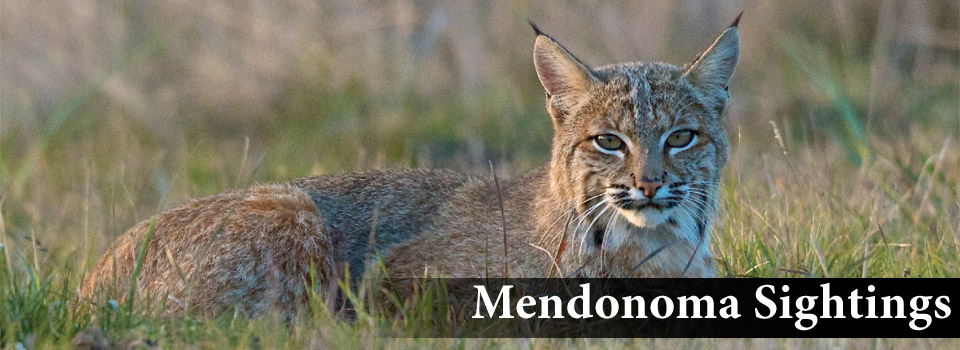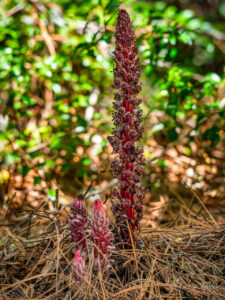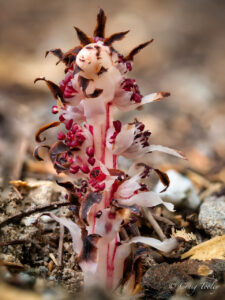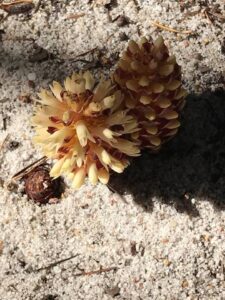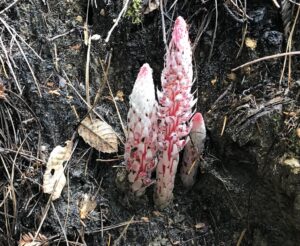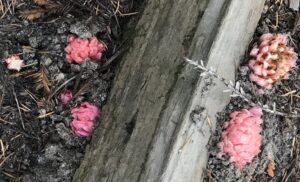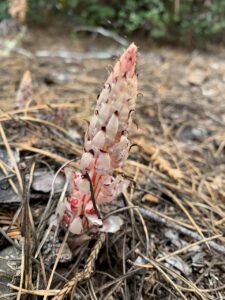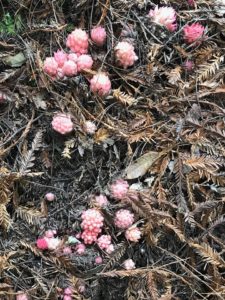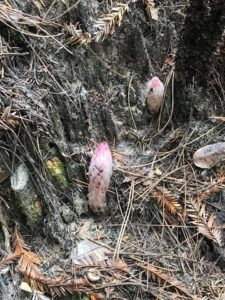I was so excited to find this group of Sugarsticks. They are growing on a neighbor's property under a huckleberry bush.
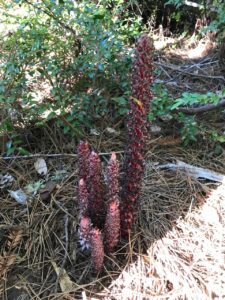 The large one is the largest I've ever seen and there are seven smaller ones emerging. They obtain sugar and other nutrients from underground fungus, which I believe it the Matsutake fungus. Every winter, Matsies emerge in this area.
The large one is the largest I've ever seen and there are seven smaller ones emerging. They obtain sugar and other nutrients from underground fungus, which I believe it the Matsutake fungus. Every winter, Matsies emerge in this area.
There is a nice fog bank over the Pacific Ocean, but it's sunny in Anchor Bay. We had some hot air move in Saturday afternoon, and the temperature at our property went from 75 to 92 degrees in a matter of minutes. Yikes! It's not so hot today, thank goodness.
